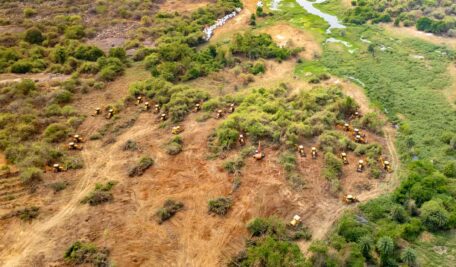Kancha Gachibowli: Restoration plan yet to take final shape

Relocation of wildlife ruled out, setting up enclosures a viable option, says a forest official
Published Date – 11 May 2025, 12:11 AM

HYDERABAD: With just five days left for submitting an ecological restoration plan to compensate for the large-scale destruction of 100 acres at Kancha Gachibowli to the Supreme Court, the State Forest Department is yet to give a final shape to the plan.
The mass felling of trees in Kancha Gachibowli and disturbing images and videos of wildlife, especially spotted deer, running for shelter had gone viral on different social media platforms. Accordingly, a row erupted across the country and people from different sections condemned the destruction. On April 3, the Supreme Court took suo moto cognizance of the mass tree felling and directed the Forest Department to come up with a restoration plan. The next hearing of the case is slated for May 15.
The Forest Department has been claiming that the 400 acres were not forest land and was not classified as forest either. The department is now drawing plans covering multiple aspects, particularly rejuvenation of green cover and protection of wildlife. There was a considerably high population of spotted deer, peacocks, peafowl and others in those lands. Relocation of these species was ruled out and the viable option was to set up enclosures, a senior Forest official said.
“But to set up an enclosure, the University of Hyderabad’s approval and funding is required. If not, the State government needs to fund and support,” the official explained.
Even after establishing enclosures, there are a few other challenges, including the stray dog menace and ensuring survival of wildlife that need to be addressed. To fix the stray dog menace, plans have to be drawn involving the Greater Hyderabad Municipal Corporation, Blue Cross and other NGOs. Since relocation of stray dogs in other areas was not permitted, sterilization efforts need to be intensified. This apart, regular intervention measures have to be taken up to develop grasslands in substantial area for the survival of spotted deer and other species.
Long back, when Osmania University faced a similar issue, the management wanted the spotted deer to be relocated to other areas and the task was completed successfully. In contrast, the University of Hyderabad was insisting that flora and fauna should not be disturbed, the official informed.
Regarding green cover rejuvenation, extensive plantation of local species can be taken up. However, it would take lot of time for the saplings to grow and constant monitoring was required to ensure survival of the plantations, the official added.






